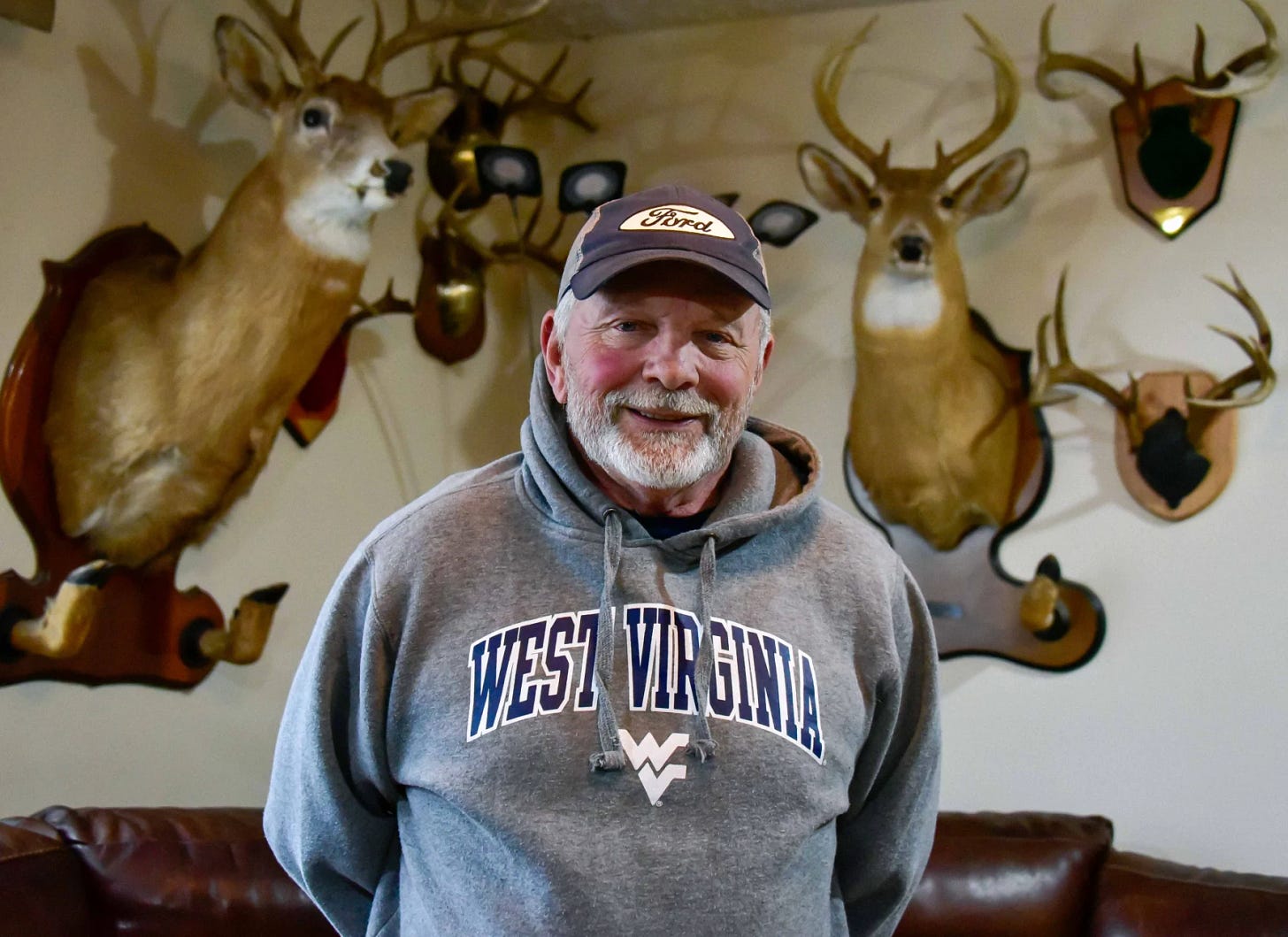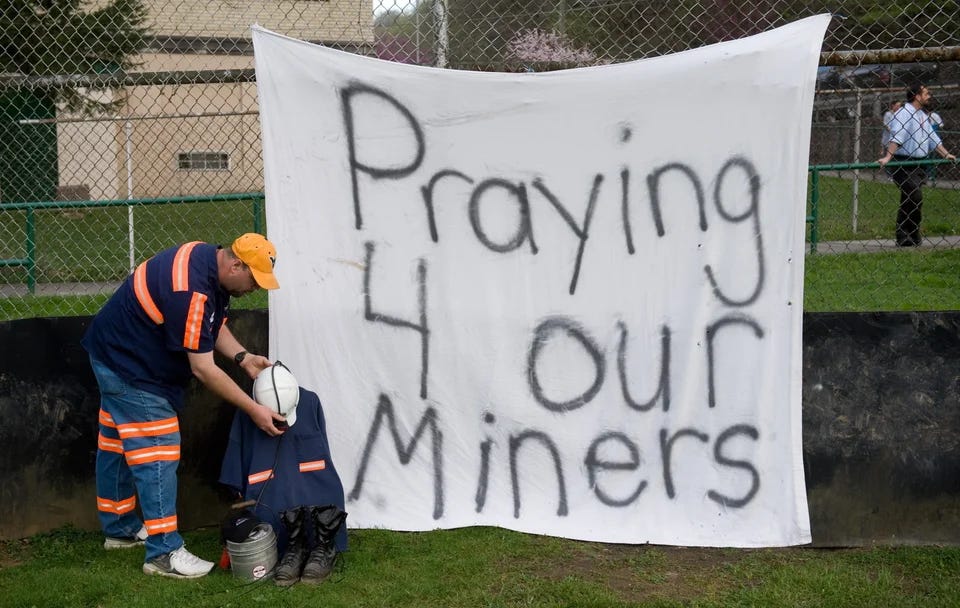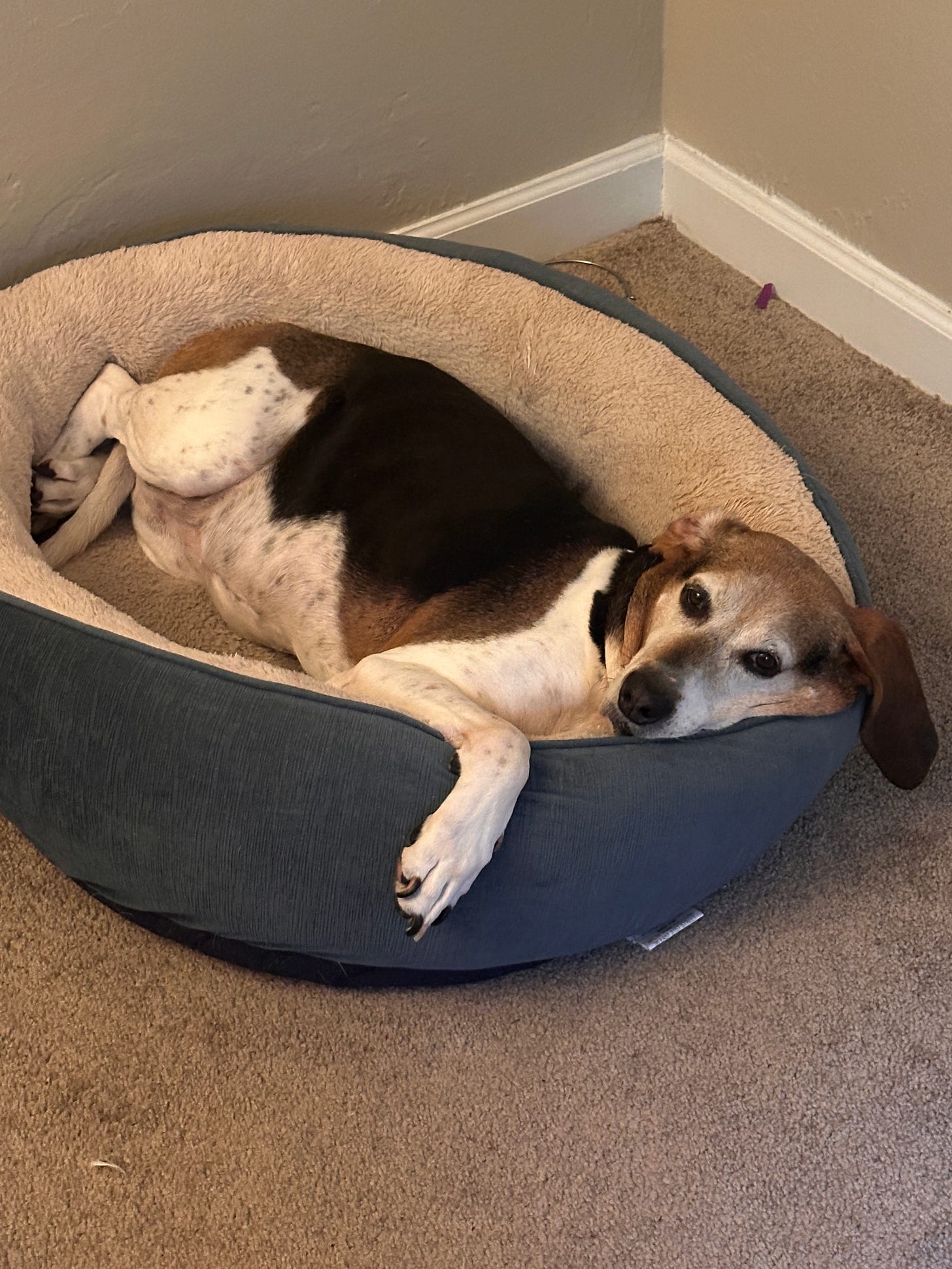On the 15th anniversary of the UBB mine disaster, Trump and Musk are putting miners at risk
The Upper Big Branch Mine Disaster showed us that corporate greed leads to tragedy. Trump and Musk are enabling that to happen again.
On April 5, 2010, 29 men would depart their homes for their work site — a coal mine in Raleigh County nearly 1,000 feet below the surface of the earth — to perform a job that people have come to associate with the state of West Virginia. The difference between that day and others like it was that those poor souls would never return to the surface.
This would become known as the Upper Big Branch Mine Disaster, and is to this day the worst mine disaster since the 1970s. Below, I’ve outlined details about what happened that caused this tragedy, and the efforts by the current Trump Administration to undermine mine safety that are putting miners at risk.
The McAteer Investigation
An independent investigation was commissioned by the state to identify the cause of the UBB disaster, and was led by the former head of the Mine Safety and Health Administration (MSHA) Davitt McAteer.1
I want to give Joe Manchin credit here for commissioning this panel despite MSHA already doing their own investigation — it was a smart thing to do, since the government agency may not be able (or willing) to tell the full story.
The McAteer Investigation Findings
A large theme of the McAteer investigation put the blame on Massey Energy and their corporate culture, claiming that “Massey exhibited a corporate mentality that placed the drive to produce coal above worker safety.”
NPR did a good job of summarizing the main takeaways:
The Upper Big Branch coal mine explosion was a manmade disaster that could have been prevented.
Massey Energy put coal production ahead of safety.
Poor ventilation in the mine allowed explosive methane gas to accumulate.
Poorly maintained, and malfunctioning water sprayers failed to control a small methane ignition.
Massey Energy failed to control coal dust, which turned a small ignition into a series of massive explosions.
Federal and state regulators failed to rigorously enforce mine safety laws.
UBB miners worked in an atmosphere that was hostile to regulation and to miners who complained about safety issues.
Massey failed to maintain a tracking system in the mine that would have told rescuers who was underground and where after the blast.
Don Blankenship
I don’t want to fixate too much on Don Blankenship (I’ve talked ad nauseam over the years about how much I despise that man), but I would be foolish if I did not mention that he is a key part of this saga. He was the CEO of Massey Energy at the time of the UBB disaster in 2010, and was a notorious union buster who habitually ignored safety violations at his mines, including the UBB mine. This documentary below by West Virginia Public Broadcasting is worth a watch, if you want to get the full picture of how he operated in the political sphere of West Virginia before the tragedy.
Don Blankenship was indicted on four charges — three felonies and one misdemeanor — in relation to the UBB disaster. Ultimately, he was convicted of one count of conspiring to violate mine-safety regulations and sentenced to only one year in prison. He went on to run bizarre campaigns for public office in West Virginia.
I despise him. With every fiber of my being.
The Trump Admin is putting miners at risk
Coal mining is on a downward trend as other energy sources become cheaper and more efficient.
While I don’t like the environmental impact involved with coal, and as a general rule despise the business practices of coal companies, these two things are wholly separate from the coal miners themselves. This distinction is very important. With that being said, I want to make the next statement crystal fucking clear:
We need to fight for them — to protect their benefits, to improve their working conditions, to preserve their bodies from the effects of coal and silica dust exposure, and a whole myriad of other threats to their livelihood. They are too often used as a political pawn by politicians around election time, then quickly discarded afterward.
Trump cosplays as a supporter of coal miners, but he isn’t. And there is a real fear that he is going to put them at a much greater risk.
A survivor of Upper Big Branch Mine Disaster is sounding the alarm
Stanley “Goose” Stewart gave a very insightful interview with Louisville Public Media. I strongly encourage reading the full article here.

I cannot imagine the memories he has of that day, or what goes through his mind. I believe we should value his opinions and insights heavily. He is afraid it could happen again.
“Not a day goes by that it don't cross my mind…I still have occasional nightmare…every time I seem to think I’m over them, the next thing I know is: Wake up Stanley, wake up, you’re home you’re okay.”
Today, Stewart fears it will happen again.
He and other whistleblowers say the Trump administration’s cuts to staff at the Mine Safety and Health Administration are setting the stage for another deadly disaster.
“I’ll tell you, right now, I wouldn't want to be in a coal mine.”
I find this to be extremely alarming. If we should be listening to anyone, perhaps it should be one of the survivors.
TRUMP closing 15 MSHA safety offices in Appalachia
34 MSHA mine safety offices, including 15 in Appalachia, are expected to be closed due to cuts to the agency from the DOG committee.
If all the targeted offices close, it would leave only two MSHA offices in place to police more than 100 Kentucky coal mines, where millions of tons are produced every year. (Source: Courier-Journal)
Credit to the Courier-Journal for putting this map together with the office locations.
So what does this mean in practical terms?
Ending these leases will likely mean terminating jobs, or at the very least relocating them elsewhere. That means less mine safety regulators based in coal mining regions inspecting mines and holding mine operators accountable, which — as we saw with UBB — is critical.
Chelsea Barnes, a stellar advocate for Appalachia whom I have a tremendous amount of respect for, lays this out quite well:
“There are going to be fewer inspections, which means that operators that are not following the rules are going to get away with not following the rules for longer than they would have,” said Chelsea Barnes, the director of government affairs and strategy at the environmental justice nonprofit Appalachian Voices. The organization has worked with union members and advocates for those with black lung disease to lobby for stricter silica dust exposure limits. (Source: Grist)
We already have to deal with Trump’s pick to head MSHA being a former industry trade association VP (shocking, I know). The rank-and-file regulators are not political appointments, though. They are often people passionate about their jobs who want to ensure miners come home to their families every night, and that they have many years left after retirement to spend with their grandchildren.
Cuts to NIOSH
Elon Musk’s fake DOG committee is once again having very real consequences. An executive order issued by Trump in February will have a directly negative effect on the safety of miners in the U.S.2
The National Institute for Occupational Safety and Health (NIOSH) is a research agency that studies worker health and has provided research to supporter safer workplaces, including to miners in Appalachia.
It was the NIOSH in 1974 that recommended a limit of 50 micrograms per cubic meter of air to be the allowed exposure limit for toxic silica dust
“It’s impossible to care about workers’ safety and health and not care about NIOSH,” Chris Williamson, who led the federal Mine Safety and Health Administration under former President Joe Biden, told the Gazette-Mail Tuesday
Around 2/3 of NIOSH (873 employees) were laid off recently — including several in their Morgantown, WV office.
Sidebar: Last year, we had the great honor of interviewing Chris Williamson (mentioned in the block quote) about what he was doing for mine safety, including ushering in a silica dust exposure rule that objectively would save miners lives.
Possible pause/lack of enforcement on silica dust rule
Chris Williamson made it a hallmark of his tenure at MSHA to ensure that a new silica dust exposure rule be finalized and implemented, and he was successful in doing so.
Without going into extreme detail, it basically sets stricter regulations limiting the toxic silica dust workers can be exposed to in mines, concrete factories and gravel quarries. This silica dust is notorious for causing Black Lung, and this new rule would objectively save lives. It was a massive win, and one Chris was extremely proud of. But lately, there have been indications that it could be paused or even rolled back entirely.
Today, the National Stone, Sand, and Gravel Association filed an emergency administrative stay motion to delay the compliance deadline — clearly looking to challenge the rule entirely.
Last year, House Republicans tried to block funding to enforce the rule
Several mining trade associations have challenged the legality of the rule in court
Trump’s new MSHA pick is friendly to the industry, so the rule’s enforcement would appear to be in jeopardy — which is truly shameful.
Where do we go from here?
I’m going to try to put out alerts/action items when possible if things come up where you can call your representatives and encourage them to do the right thing on these issues. When it comes to nuanced stuff like this, they tend to listen more. They need to know people are paying attention to this stuff and care about it.
Remember: coal miners do back-breaking work. They sacrifice their bodies to provide the resources that power our homes. The companies that they work for are full of crooks, but the people mining the coal aren’t. If there are ways that we can help them, we’ve got to try.
— Chuck
Hey, if you made it this far, would you mind taking a quick poll?
Thanks for reading. I hope you’ll consider subscribing. Or if you’re already subscribed, upgrading to a paid subscription for $5/month or $50/annually. It helps with the time I spend each week writing, researching, and editing.
I actually interviewed him once for a college journalism class I took. Interesting guy. I was not very good at journalism, and I’m pretty sure I annoyed the shit out of him.
It is important to point out that this isn’t exclusively coal miners. Any type of mine — from copper, gold, iron, and manganese and can even encompass rock quarries.









As his oldest child, I can assure you that you probably didn't annoy the shit out of him, and that as gruff and dismissive as he might've seemed I'd guess he was, and is, deeply appreciative that a younger WVian was engaging with and taking interest in this tragedy and in the bigger cultural story of Appalachian miners.
But I'll ask and if he did find you annoying, I'll let you know🤪
Thank you for this! I live in WV, actually just about 5 minutes from one of our state’s most active coal mines. I’ve been looking for a breakdown so I could talk about this when calling our US Congress folks. I also agree with your point that these folks respond when we call in about nuanced issues that deeply impact us in this state.